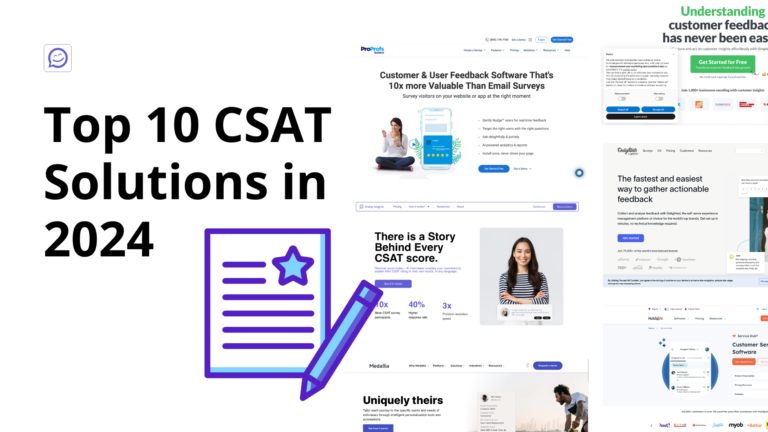In a recent webinar, experts Daniel from Telemetry Deck and Pietro from Chatty Insights shared valuable insights on user interaction, engagement metrics, and pricing models for B2B and B2C products. This blog post, divided into two parts, will highlight the key points discussed. In this first part, we will explore user engagement on websites versus native apps, optimizing user engagement by managing friction, and understanding different pricing models for B2B and B2C products.
User Engagement on Websites vs. Native Apps
User churn, the phenomenon where users stop engaging with an app, poses a significant challenge for developers. The webinar underscored that retention is the inverse of churn; thus, improving retention rates is paramount. Gabriel emphasized the importance of continuous engagement and feedback mechanisms as vital tools in the arsenal against churn. Leveraging Churn Analysis tools can provide developers with a direct line to user experiences, helping to understand and address concerns proactively.
Challenges of Tracking User Churn on Websites
Users might visit a website once or twice and then not return, making it hard to maintain ongoing engagement. Tracking user behavior on websites often lacks precision. You can measure visit duration and click-through rates, but the data might not be as detailed as needed.
Advantages of User Engagement with Apps
In contrast, users who download an app show a higher level of commitment. The process of finding, downloading, and installing an app indicates a strong interest. Apps enable more precise tracking of user actions. You can see how long users stay, what features they use, and when they stop using the app. This detailed data helps you understand user preferences and enhance the app experience.
Dom emphasized the significance of these differences. By understanding how users interact with your website versus your app, you can better tailor your engagement strategies to each platform’s unique dynamics.
The Impact of Friction on User Experience
In the world of user engagement, friction plays a crucial role. Gabriel emphasized how friction affects users’ ability to complete tasks, ultimately influencing their overall experience and engagement levels.
A Barrier to Engagement
Imagine you’re trying to sign up for a new service, but the form asks for extensive personal details right from the start. This is an example of high friction. When users encounter too many hurdles, like lengthy forms, they often abandon the process. High friction can turn potential users away before they even start using your product.
The Risk of Unqualified Users
On the flip side, picture a sign-up process that asks for minimal information, making it quick and easy to join. While this low friction approach may attract more users initially, it often results in a high number of unqualified users. These users might sign up without much thought and fail to engage deeply or stick around long-term.
The Goldilocks Principle
The challenge is to find a balance that is “just right.” This is where A/B testing comes into play. By experimenting with different versions of user flows, you can determine the optimal level of friction. For instance, testing a shorter sign-up form against a longer one can reveal which version retains more users. The goal is to streamline the process just enough to keep serious users engaged while not deterring potential customers.
Friction in B2C Products – Keeping It Simple
For consumer products, the aim is often to minimize friction. Users seeking B2C products want quick and seamless access. If the process is too complicated or time-consuming, they are likely to move on to a competitor. Think about how easy it is to sign up for popular social media platforms—they make the process as frictionless as possible to attract and retain users.
Friction in B2B Products – Filtering for Serious Users
In contrast, B2B products benefit from a bit of friction. Businesses typically seek solutions that provide significant value, and a slightly more involved sign-up process can help ensure that only serious, committed users sign up. This approach helps filter out casual users who are unlikely to convert into paying customers, ensuring that your user base consists of engaged, high-quality leads.
By understanding and strategically managing friction, you can enhance user engagement, improve retention rates, and ultimately drive better business outcomes.
Pricing Models for B2B and B2C Products
Pricing models vary significantly between B2B and B2C products. Understanding these differences can help in setting the right price for your product.
B2C Pricing Strategies
Consumer products often rely on a high volume of users. Many users might use the product for free or at a low cost. This model works well for apps or services that benefit from a large user base, such as social media platforms or mobile games. The goal is to attract as many users as possible, even if not all of them will convert into paying customers.
B2B Pricing Strategies
Business products typically have fewer users but each user is more valuable. Pricing for B2B products often reflects this higher value. Instead of focusing on volume, the aim is to provide a robust product that meets specific business needs. For example, a software tool designed for project management might charge a higher fee but offer extensive features and support.
Gabriel pointed out that understanding your audience and their willingness to pay is crucial. For B2C products, consider offering a freemium model where basic features are free, and advanced features require a subscription. For B2B products, focus on demonstrating the value and return on investment your product provides.
Utilizing Telemetry Tools for Enhanced User Engagement
Telemetry tools are essential for tracking user behavior and engagement. Dom from Telemetry Deck highlighted how these tools can provide detailed metrics to help businesses understand user interactions and identify friction points.
Tracking Detailed Metrics
Telemetry tools allow you to track specific user actions. This includes how long users stay on a page or app, which features they use, and when they drop off. By analyzing this data, you can pinpoint where users encounter issues or lose interest.
Identifying Friction Points
Knowing where users face difficulties helps in improving the user experience. For example, if users consistently abandon the sign-up process at a particular step, you can investigate and optimize that part of the flow. This might involve simplifying the form or providing better instructions.
Cross-Platform and Device Tracking
It’s crucial to track user behavior across different devices and platforms. Gabriel emphasized that user behavior can vary significantly between mobile and desktop. For instance, mobile users might prefer quick, easy interactions, while desktop users might be more comfortable with detailed tasks.
By using telemetry tools, you can get a complete picture of how users interact with your product. This comprehensive view enables you to make data-driven decisions to enhance user engagement and satisfaction.
Conclusion
In this two-part blog series, we explored key insights from the Telemetry Deck webinar. We covered the differences in user engagement between websites and apps, the impact of friction on user experience, and distinct pricing models for B2B and B2C products. We also discussed the importance of telemetry tools for tracking detailed metrics and understanding cross-platform user behavior.
By applying these insights, you can improve user interaction, optimize your product experience, and develop effective pricing strategies. We hope you found these discussions valuable and insightful.
Frequently Asked Questions
Q: What is the main difference between user engagement on websites and native apps?
A: Users typically engage more deeply with apps since they have taken the steps to download and install them. Websites might see more casual, less frequent visits.
Q: How does friction affect user engagement?
A: Too much friction can deter users, while too little friction might attract unqualified users. The key is finding a balance that keeps serious users engaged without overwhelming them.
Q: What are the best practices for optimizing friction in user experience?
A: Use A/B testing to experiment with different levels of friction. For B2C products, aim to minimize friction. For B2B products, a bit of friction can help filter for serious users.
Q: How should pricing models differ between B2B and B2C products?
A: B2C products often rely on high user volume, with many users using the product for free. B2B products, having fewer but more valuable users, should reflect higher pricing and robust features.
Q: What are telemetry tools, and why are they important?
A: Telemetry tools track user behavior and provide detailed metrics. They help identify friction points and understand user interactions across different devices and platforms.
Q: How can I use telemetry tools to improve user engagement?
A: Analyze the detailed metrics provided by telemetry tools to identify where users encounter issues. Use this data to optimize the user experience and ensure seamless interaction across all devices.
Stay tuned for more insights and tips in our future blog posts. Thank you for reading, and we look forward to helping you enhance your user engagement strategies!

